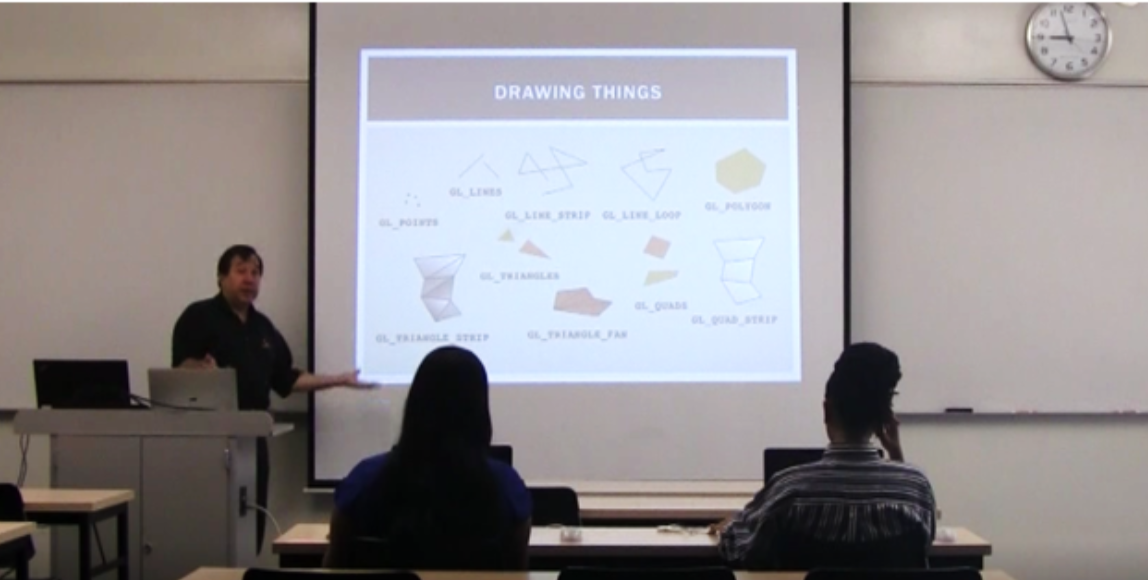 University
students are often presented with the choice between a traditional
classroom and an online learning environment. Given the growing
interest in web-based learning, it is essential to understand if
students’ needs are met in these learning environments. Sensing
mechanisms enable real- time monitoring of students’ reactions as
they view and engage with course content. We use galvanic skin
response and facial expression analysis to identify differences in
behaviors associated with learning via a face-to-face versus an
online lecture. We also explore the effects of incentives on
learning. Findings indicate that physiological data recorded
during a lecture is a good indicator of content difficulty,
potentially providing a way for instructors to adjust their
materials and delivery to benefit students’ understanding. The
data further suggests that subjects react more negatively to
online lecturing and that learning incentives may have the adverse
effect of increasing stress on students as opposed to improving
performance. University
students are often presented with the choice between a traditional
classroom and an online learning environment. Given the growing
interest in web-based learning, it is essential to understand if
students’ needs are met in these learning environments. Sensing
mechanisms enable real- time monitoring of students’ reactions as
they view and engage with course content. We use galvanic skin
response and facial expression analysis to identify differences in
behaviors associated with learning via a face-to-face versus an
online lecture. We also explore the effects of incentives on
learning. Findings indicate that physiological data recorded
during a lecture is a good indicator of content difficulty,
potentially providing a way for instructors to adjust their
materials and delivery to benefit students’ understanding. The
data further suggests that subjects react more negatively to
online lecturing and that learning incentives may have the adverse
effect of increasing stress on students as opposed to improving
performance.
|
| Collaborators
|
|
|
| Publications
|
|
|
 University
students are often presented with the choice between a traditional
classroom and an online learning environment. Given the growing
interest in web-based learning, it is essential to understand if
students’ needs are met in these learning environments. Sensing
mechanisms enable real- time monitoring of students’ reactions as
they view and engage with course content. We use galvanic skin
response and facial expression analysis to identify differences in
behaviors associated with learning via a face-to-face versus an
online lecture. We also explore the effects of incentives on
learning. Findings indicate that physiological data recorded
during a lecture is a good indicator of content difficulty,
potentially providing a way for instructors to adjust their
materials and delivery to benefit students’ understanding. The
data further suggests that subjects react more negatively to
online lecturing and that learning incentives may have the adverse
effect of increasing stress on students as opposed to improving
performance.
University
students are often presented with the choice between a traditional
classroom and an online learning environment. Given the growing
interest in web-based learning, it is essential to understand if
students’ needs are met in these learning environments. Sensing
mechanisms enable real- time monitoring of students’ reactions as
they view and engage with course content. We use galvanic skin
response and facial expression analysis to identify differences in
behaviors associated with learning via a face-to-face versus an
online lecture. We also explore the effects of incentives on
learning. Findings indicate that physiological data recorded
during a lecture is a good indicator of content difficulty,
potentially providing a way for instructors to adjust their
materials and delivery to benefit students’ understanding. The
data further suggests that subjects react more negatively to
online lecturing and that learning incentives may have the adverse
effect of increasing stress on students as opposed to improving
performance.